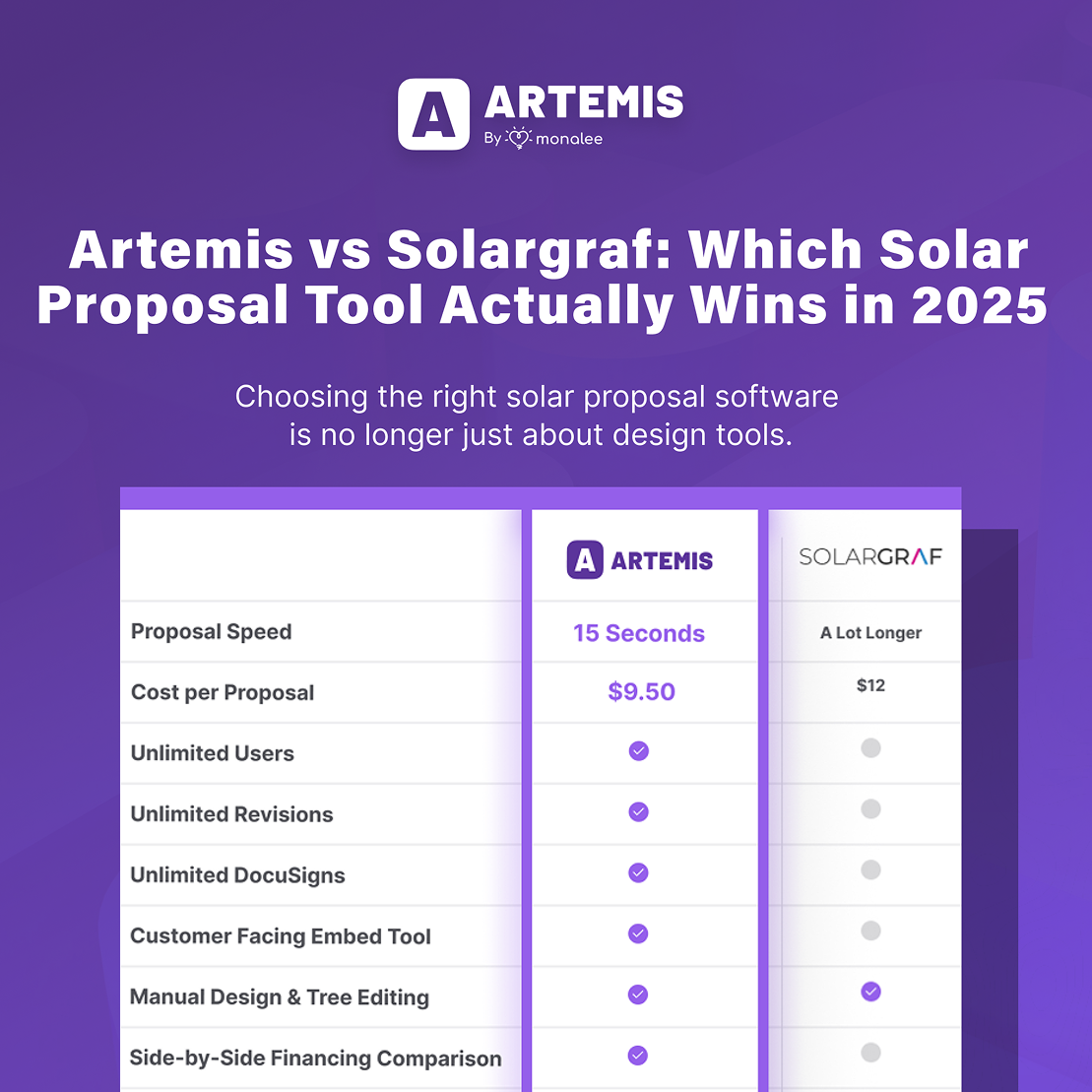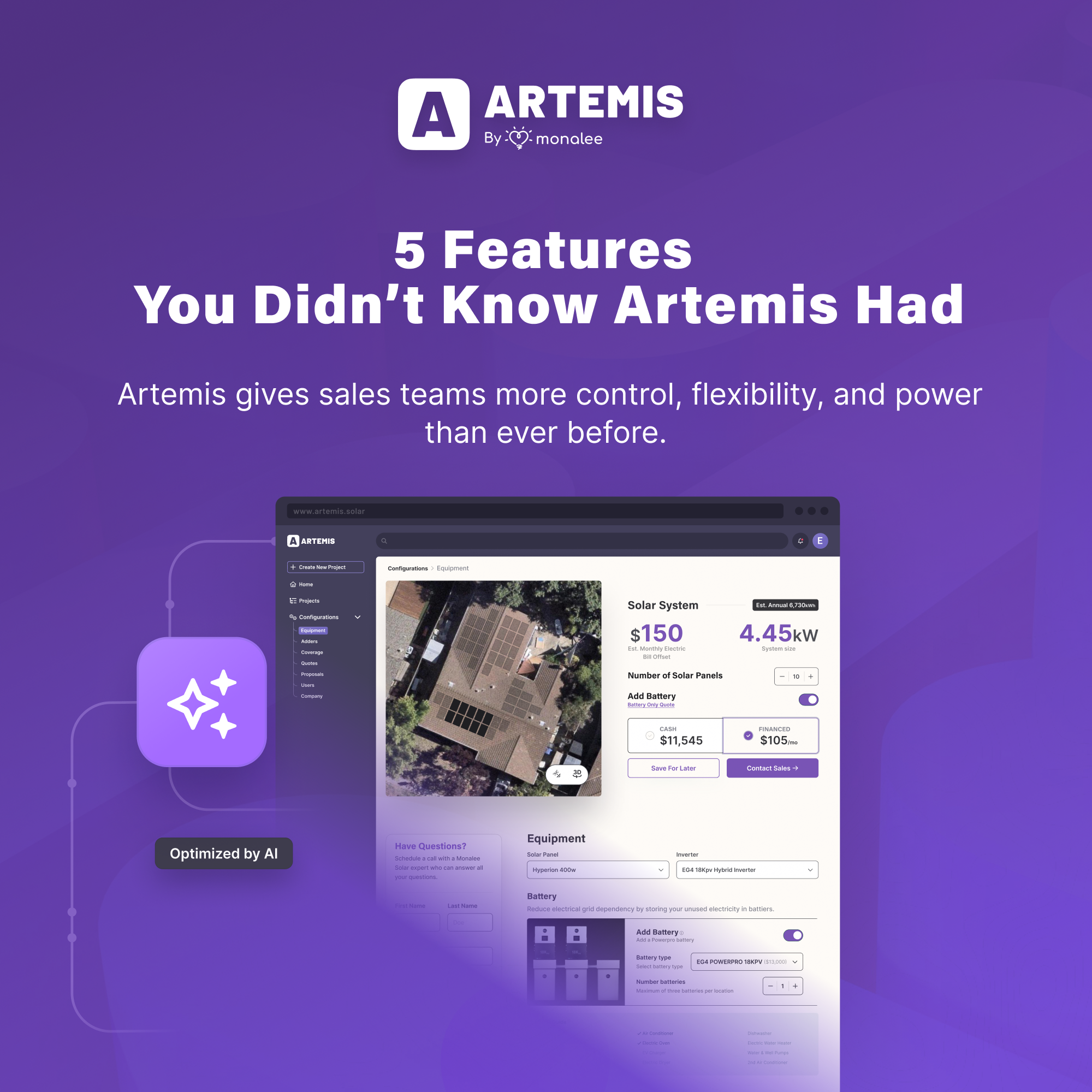Choosing the right solar proposal software is no longer just about design tools. It’s about speed, cost, sales performance, and how well your platform integrates with the rest of your stack. Artemis and Solargraf are both popular options in the market, but they’re built with very different priorities in mind.
This blog breaks down how they compare and why many fast-growing solar teams are choosing Artemis over Solargraf.
1. Proposal Speed
Artemis generates full proposals in just 15 seconds. Solargraf often requires significantly longer wait times. Users report that rendering, shading analysis, and final proposal generation can take minutes, particularly on complex roofs or when internet speeds are limited.
If your sales reps are presenting live or trying to close in the field, proposal speed directly impacts your conversion rate. Waiting around for backend designers or delayed documents introduces friction into your sales process.
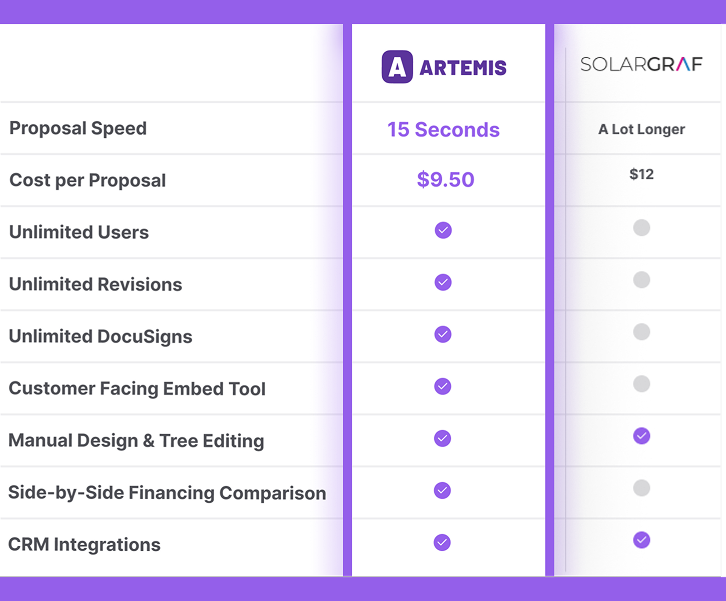
2. Cost Per Proposal
Artemis charges $9.50 per proposal, with pricing that decreases at volume. Solargraf’s average cost per proposal is around $12, and it often comes bundled with monthly or annual license fees, along with limits on the number of users.
Artemis includes unlimited users, unlimited revisions, and unlimited DocuSigns at no extra cost. Solargraf’s pricing structure can penalize fast-moving teams with large headcounts or high proposal volume.
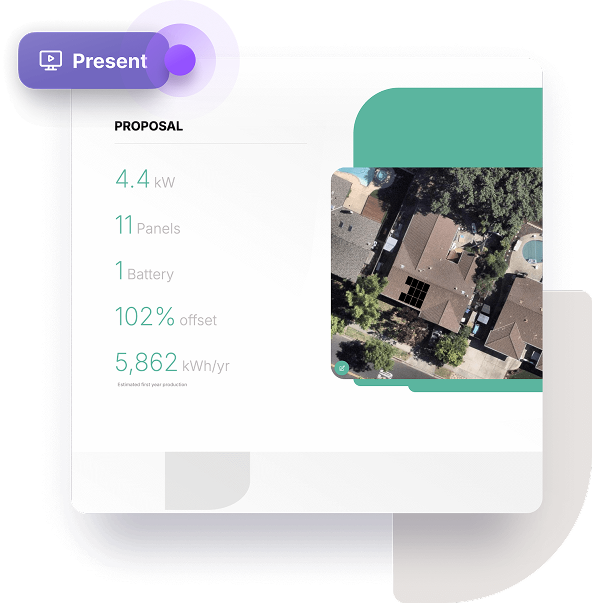
3. Website Quote Embed Tool
Artemis includes a simple, code-light widget that lets solar companies embed a real-time quote tool directly onto their website. This allows homeowners to get instant pricing, system design estimates, and financing options before ever speaking to a rep.
Solargraf does not offer a website-embedded quoting experience. That means your site visitors are required to request a consultation or wait for manual follow-up to get pricing, which can reduce conversion rates.
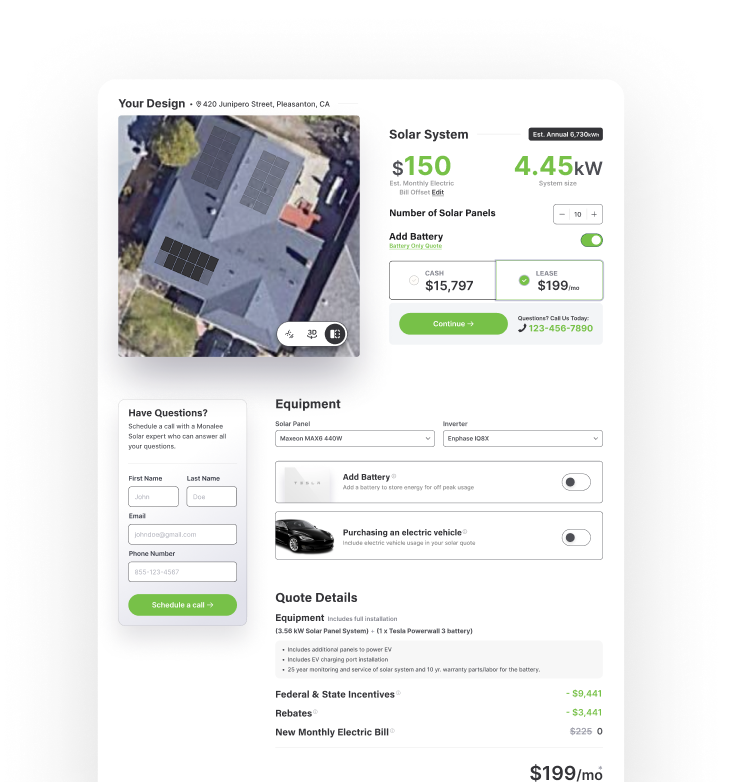
4. Real-Time Sales Rep Control
One of the biggest advantages Artemis offers is in-the-moment control. Sales reps can adjust panel counts, swap in different financing products, add or remove batteries, and more—right in front of the customer.
Solargraf leans more heavily on a design-first workflow. Adjustments often require designer involvement or navigating multiple backend steps, slowing down the sale.
If your team is focused on same-day closes or one-call closes, real-time configurability is a critical feature.
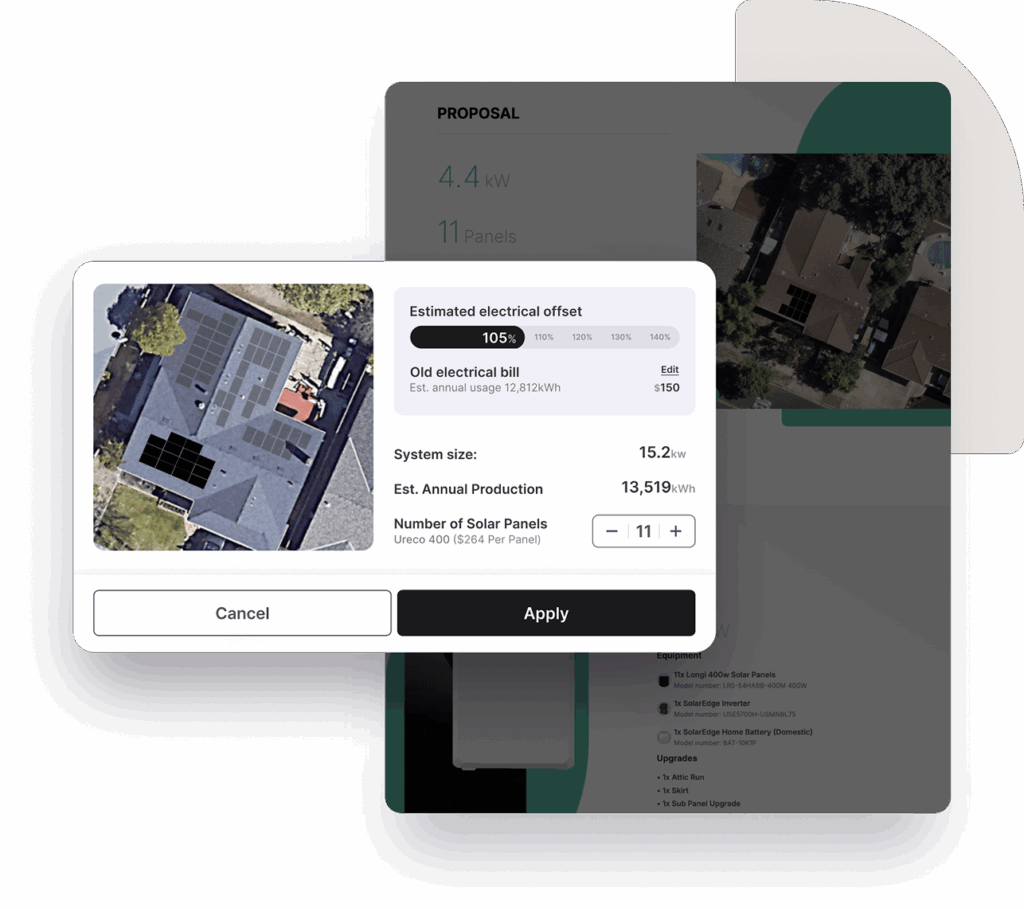
5. Built-in Financing Tools
Artemis allows reps to compare side-by-side financing options, run soft credit checks, and submit applications directly inside the platform. It supports providers like GoodLeap, Mosaic, and Sunlight Financial.
Solargraf users typically switch to external portals or enter financing data manually. That extra step increases drop-off risk, complicates workflows, and can slow down time to funding.
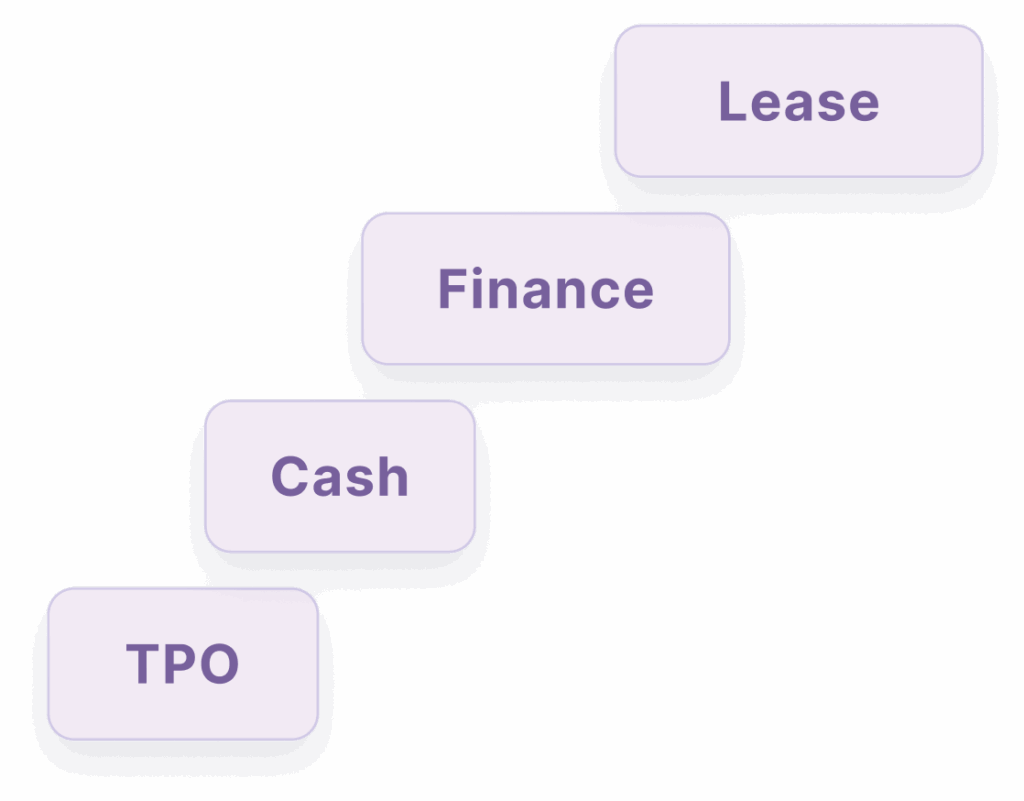
6. CRM and Workflow Integrations
Artemis is API-first and integrates directly with leading CRMs like Salesforce, HubSpot, GoHighLevel, and others. Proposal data syncs automatically, keeping marketing, sales, and operations teams aligned without requiring custom middleware.
Solargraf does support some integrations, mostly via Zapier. However, deeper CRM automation and customization often require workarounds.
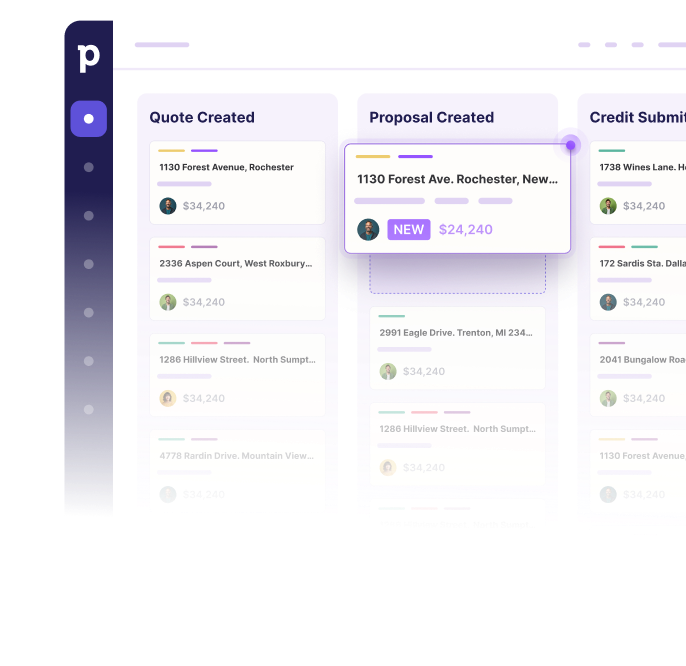
Final Takeaway
Solargraf has been a solid option for solar design teams, especially those prioritizing backend production tools. But Artemis is designed for speed, sales performance, and operational simplicity.
If your team is focused on fast closings, real-time proposal adjustments, integrated financing, and lower cost per deal, Artemis is built to deliver. It’s optimized for modern sales workflows, not just design accuracy.
Teams that make the switch often find they can close more deals, reduce proposal bottlenecks, and scale faster—without sacrificing control or flexibility.
Book a demo here

